Book Review: Sky High - The Untold Story of IndiGo
- Prashant Kavi (PK)

- Jan 2
- 8 min read
Updated: Jan 30
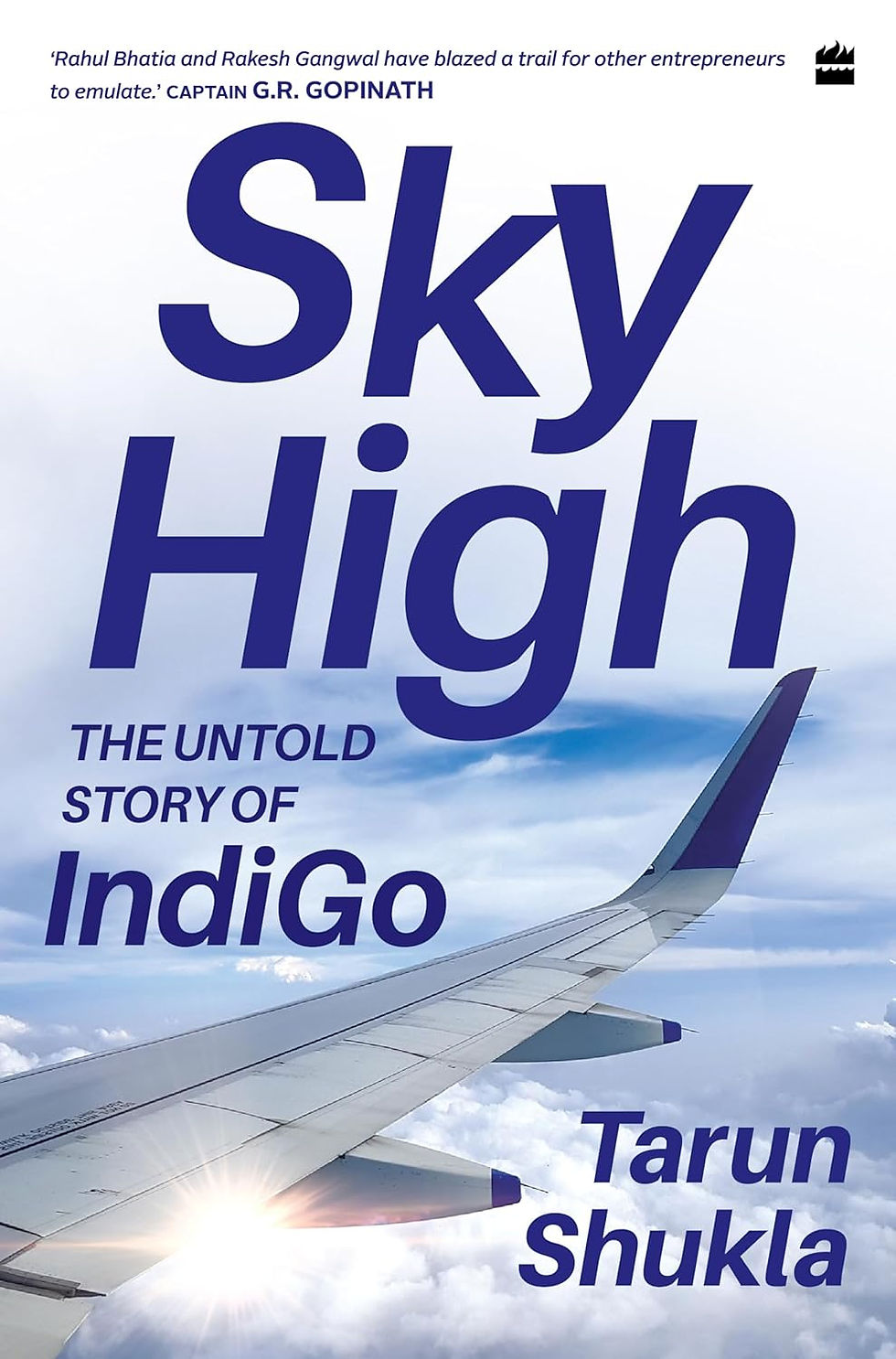
Title: Sky High - The Untold Story of IndiGo
Author: Tarun Shukla
Publisher: HarperCollins Publishers India
Edition Reviewed: June 2024
“IndiGo .. was an extremely closed airline. Its promoters, Delhi-based Rahul Bhatia and Miami-based Rakesh Gangwal, were super reclusive. Few knew how they really operated, what was on their minds, or what they were doing that made IndiGo grow so well ... IndiGo was thus a complete black hole for a journalist ..”
These excerpts from the Author’s preface to the book, perhaps best reflect the raison d'etre for the title!
For an airline that has gripped the imagination of the flying public, the media and industry watchers alike, there is very little that’s been written about IndiGo (6E). Apart from its reclusive and media shy founders, IndiGo has a sedate culture and an impregnable hierarchical structure, that runs a tight ship with strict controls at every level. And therefore, while other airlines and their employees wantonly disseminate information and insider gossip; not so for IndiGo. And having dealt first-hand with the airline at various levels, I can emphatically attest to that fact.
Perhaps then it is this sense of discipline (at all functional levels) that makes the airline so successful - the underlying theme of the book seems to suggest so too.
The IndiGo story is also striking in that it is unique in the annals of Indian commercial aviation, for an airline to have been so consistently profitable for so long and so utterly dominant. When most other airlines in India flew and crashed in a blaze of high-profile publicity and fleeting success, IndiGo took the aviation world by stealth – impeccably restrained and focused on the job, rather than build hype or chase headlines.
Even more credible therefore for the author to have persevered to bring the inside story at the phenomenon, that is IndiGo. And Tarun shines as a true raconteur, bringing together well researched facts, insights, inside stories, analysis and especially piquant anecdotes; chronicling them all into a riveting read. Add to which, the ability to write in a highly nuanced and authoritative manner, particularly on the complex technical aspects of the airline business without any formal grounding; reflecting the author’s assiduous efforts at understanding the domain and the depth of his research.
While tracing the genesis of IndiGo, the book also offers an interesting crash course on the post-deregulation Indian aviation history, starting with the launch of ModiLuft (HT) in February 1993, followed in quick succession by Jet Airways (9W) and Air Sahara (S2) the same year. The book fleshes out the political machinations, court intrigue and one-upmanship acts of the lead actors of the times, to lobby favorable terms and policies for their operations and impede rivals. Not unexpectedly, Jet Airways and Naresh Goyal are painted as the prima uomo of those lobbying games!
But perhaps the most interesting chapters of the book are the profiles of the dramatis personae of the airline and particularly the co-founders - Rakesh Gangwal and Rahul Bhatia. What makes it all interesting is the fact that not much is known about the two gents and the author does a marvelous job of painting a technicolor bio of the two, including unearthing a lot of enthralling and hitherto unknown facts.
Rakesh Gangwal is described as the brains behind negotiating the mega aircraft deals and a tough as nuts negotiator. It is widely accepted that a large part of IndiGo's success emanated from these presciently orchestrated aircraft deals (structured around the sale & leaseback model), that put it on a solid financial footing from the beginning. In the words of Nigel Harwood, former Head of Airbus in India, as recounted in the book:
"Rakesh has a way of negotiating that I have never seen before. He will ask for a point, when you eventually concede that point, he will move the goalpost and say if you have conceded that much, you can go a little further. So, you are always struggling to satisfy him in terms of the negotiation."
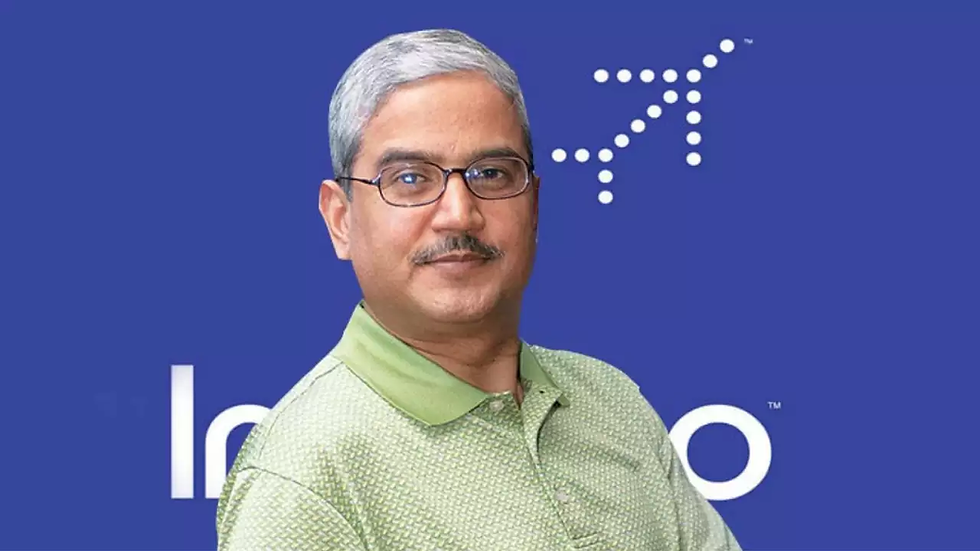
The book also describes Rakesh as a 'very tough taskmaster' and offers a fascinating insight into his operating style of setting high expectations, instilling cost controls and being unsparing ("butchering people in meetings") in holding people accountable on their decision making. In essence, the book credits Rakesh Gangwal's 'foresight and acumen', particularly on the financial management side, as having been vital to the airline's road to profitability.
Rahul Bhatia is also similarly profiled in detail in the book with a bevy of colorful anecdotes and that add to his multi dimensional persona. Rahul Bhatia and Rakesh Gangwal are compared with a 'good-cop, bad-cop' analogy, where Rahul plays the good-cop!
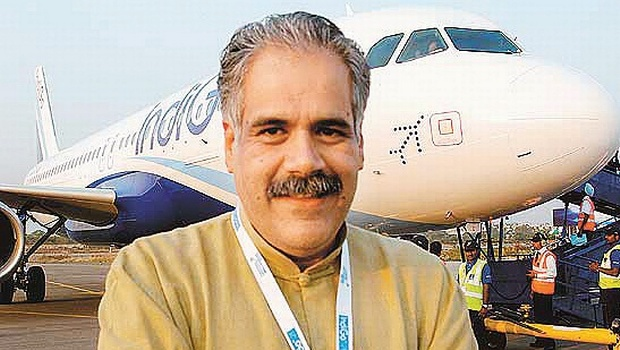
An amusing comparison made in the book between the two personalities, is presented as:
"The reticent Rahul often gets overwhelmed when speaking in public, especially about IndiGo’s success. At times people have to give him water because he chokes with emotion. Gangwal on the other hand can make others choke with his cutting questions, which make them feel they don’t know what they are talking about."
Rahul is also described as the 'perfect gentleman' who places a premium on loyalty above all else, demonstrating great care and concern for employees, that in turn makes them loyal to his cause. His OCD-type quirks are delightfully documented as are his 'religious' proclivities; including interestingly enough, how every IndiGo plane inducted into the fleet has to undergo a ritualistic {Hindu puja] ceremony!
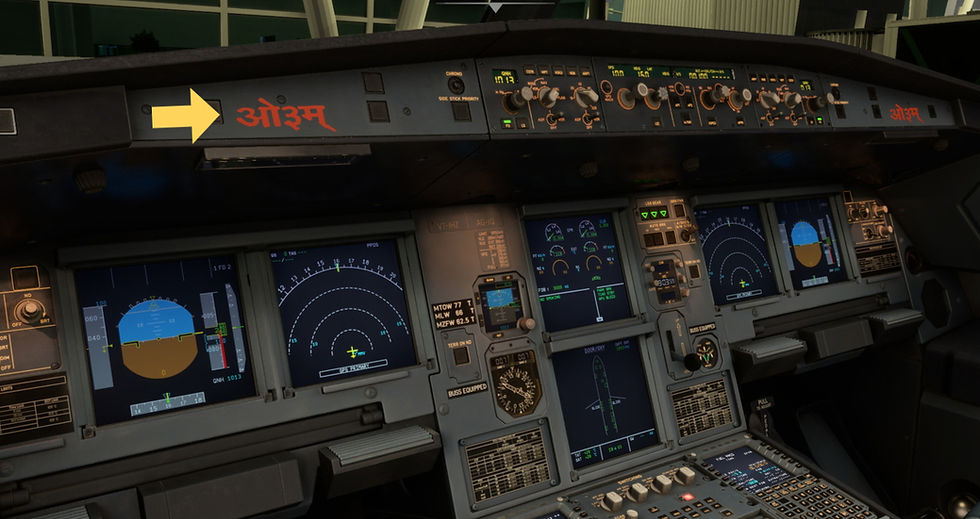
And in terms of division of labor between the two founders, Rahul played the perfect foil to Rakesh's aircraft acquisition, financial and operational management turf, by deftly managing the on-ground 'local' and rather more challenging issues, particularly those pertaining to the political establishment, the regulator (DGCA), vendor management and such.
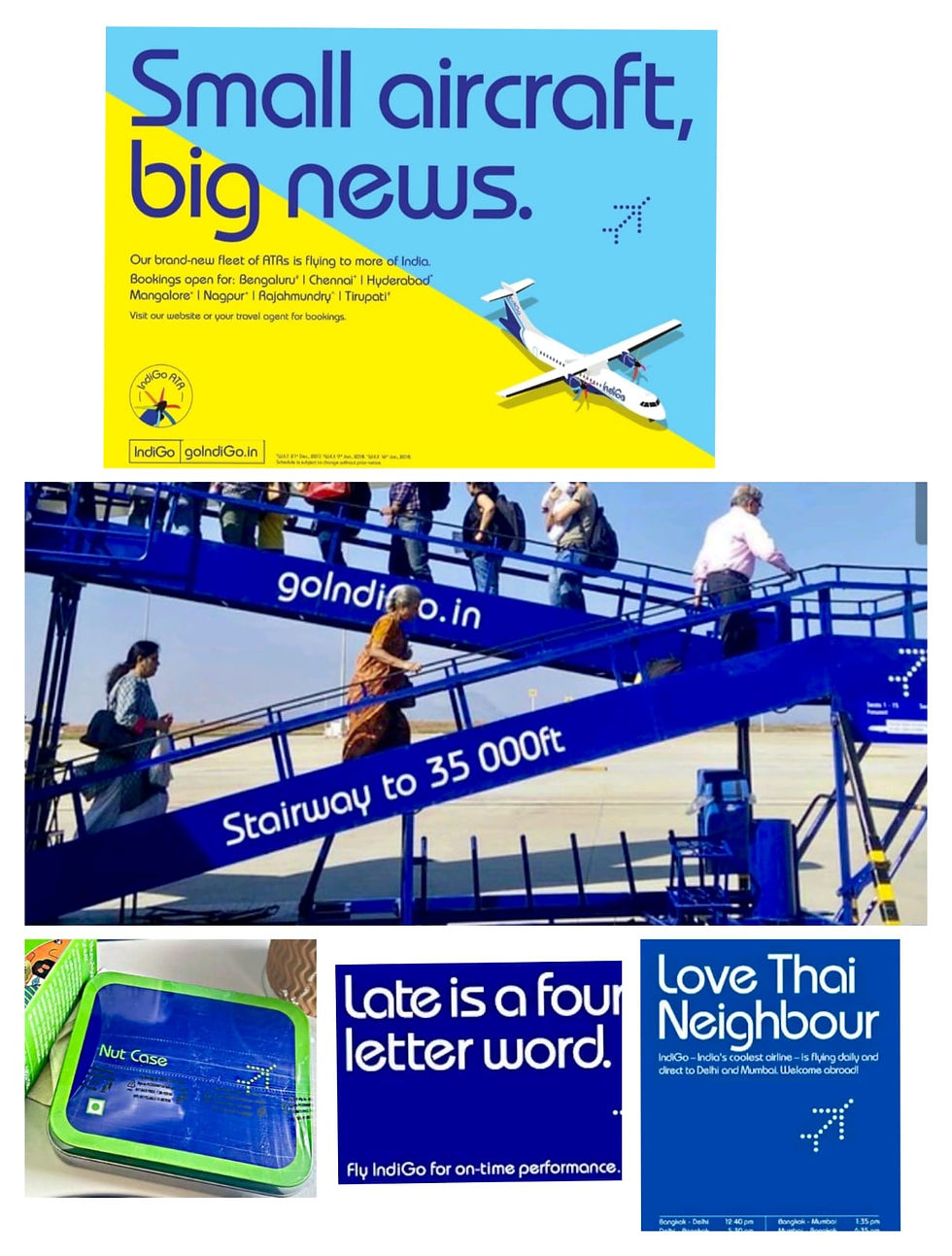
The book also documents IndiGo's much talked about branding and marketing campaigns, which were also path-breaking in many ways for commercial aviation in India. When flying from an Indian airport, the ubiquitous IndiGo branding and particularly its uniformity and consistency of application across airplanes, counters and ground support equipment/ vehicles, is unmissable and commendable. Be it the cleverly worded lines on advertising billboards or on the cookie tins, IndiGo and its marketing efforts have been a breath of fresh air in what has been otherwise a very conformist (read: stodgy) aviation marketing landscape. The book chronicles the reluctance at IndiGo to hire a 'big agency' and settling for a small outfit instead. And the resultant tale of how the brand was built, with Rahul Bhatia involved hands-on in the entire effort, is faithfully recounted. The latter is evidenced by this quote from the agency executive:
"Rahul’s personality is all over IndiGo—clean, crisp, subtle, no-nonsense, nobody knows who runs it .."
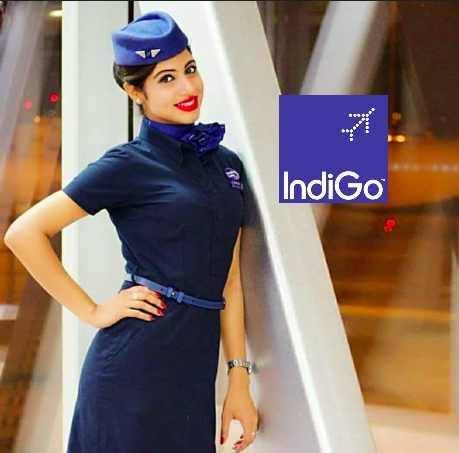
There's also a dedicated chapter on the 'Cabin Crew' and deservedly so, given that the impeccably groomed IndiGo girls (for the uninformed, there are no male cabin crew on IndiGo, yet), are somewhat of a 'cultural icon' in the Indian commercial aviation arena, besides being the all-pervading face of the airline. The book goes behind the scenes and provides absorbing details of the entire cycle from recruitment to training and all the challenges in-between for the girls. And in what might be termed as another example of democratization in the skies, the cabin crew is no longer the bastion of candidates from the metropolitan cities. Increasingly, aspirants are now coming from tier-2 and tier-3 cities and the 'bootcamp' type training at the airline's own academy, becomes the great leveler.
"The drill to instil discipline in the young crew members—who maybe fresh out of high school or college—starts from the time they join iFly. Some perhaps find it extreme."
But it's a tough job and as the book quotes an attendant to suggest that this push for excellence at the airline, can also push some towards a breakdown.
In a chapter titled 'Lobbying', towards the end, the book provides piercing insight into the workings of the Civil Aviation Ministry and the regulator, the DGCA (Directorate General of Civil Aviation) - the FAA equivalent in India. It exposes the bureaucratic ("murky") underbelly of policy making/enforcing bodies of the Government and the subterfuge that rules the day, when powerful egos and self-aggrandizing interests are at work in a high-visibility sector. The books also sheds some light on how IndiGo, from being a victim of intense political lobbying by rivals (notably Jet Airways) in its formative years, went on to embrace the concept with gusto, when it came to thwart their own rivals and followed the same playbook! For long, IndiGo and Rahul Bhatia, the book states, were at loggerheads with a succession of Civil Aviation Ministers and bureaucrats, however things changed as IndiGo gained critical mass to become too big to ignore. And as the book finally quotes Rahul Bhatia's response to a pointed interview question, around political lobbying in an industry dependent on government regulation, to a business news channel:
"Interviewer: Is it imperative to learn to manage the system? Rahul Bhatia: To an extent, yes."
At the end the book poses questions that everybody seems to be asking. How will the acrimonious fallout between the two founders i.e., Rakesh Gangwal and Rahul Bhatia and crucially the absence of Rakesh when he is perhaps needed the most, affect the future of IndiGo? And how does IndiGo cope with the "headwinds" of competition from the likes of a revitalized Air India, after sitting smug for so long with a lion's share of the domestic market?
In its stated objective of growing to be a 600-aircraft fleet by 2030, it now appears that IndiGo is willing to junk some parts of the LCC playbook and flow with the tide. For example, in the early years of its competing against the likes of full-service rivals, Jet Airways and Kingfisher, it came out with advertising that called out: 'R.I.P. Business Class', following the demise of Kingfisher. But with premium travel now surging and Air India rolling out a Premium Economy product on select domestic routes, IndiGo launched its own premium product viz. 'IndiGo Stretch' in August of this year, that sits in between a full-service Business Class and Premium Economy - both in terms of pricing and features. Besides, there was the launch of an all new loyalty program - IndiGo BluChip, also announced in August of this year. And then there have been those underlying international long-haul ambitions, that finally came to the fore when the airline announced a 30-aircraft order with Airbus for its highly popular wide-body, the A350-900, in April of this year.

But while the book remains confident about IndiGo doing well in the long term, it also cautions that such galloping ambitions need to be carefully calibrated with a lot of changes - organizational, cultural, service attitude (perhaps a hint that the strict LCC mindset with regards to service may not work anymore) and dealing with a swift ramp-up of resources (Pilots and Cabin Crew for instance) in order to maintain its primacy.
A final word
This book is recommended reading whether you follow/fly IndiGo or not, because in the wake of unearthing the definitive inside story of how an Indian airline managed to become so successful and sustainably profitable (bit of a paradox in the Indian context!), it also offers a panoramic snapshot of the evolution of the Indian commercial aviation landscape since the early 90s and a fascinating insight into how the sector has grown despite all odds. And all of this is packaged in an easy-to-read, unpretentious format that eschews unnecessary embellishments and stays focused on the story it needs to tell - which it tells so well!
The only two items to detract from an otherwise great effort, are some shoddy editing in parts and absence of any pictures/illustrations - that too when we are on the subject of aviation! One hopes the next edition may make amends on these counts.
Excerpted with permission from HarperCollins Publishers India






Comments